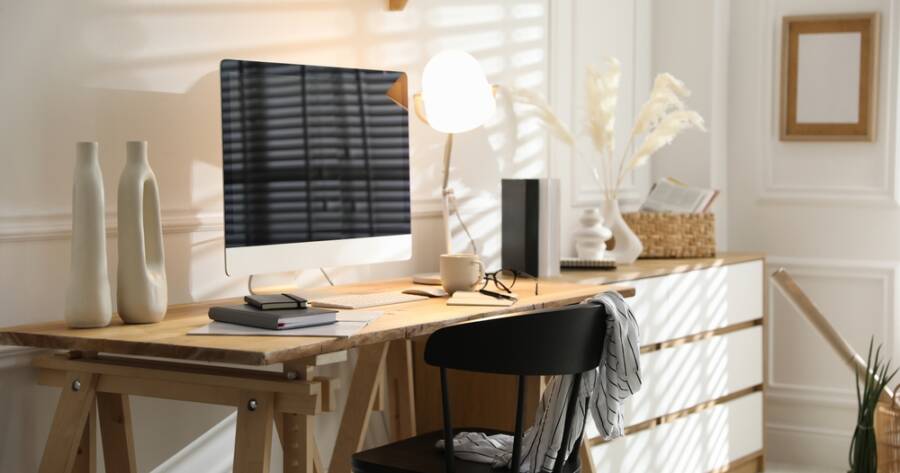Transforming a spare room into a home office is one of the most rewarding home projects you can tackle. With more people working remotely across the United States, a well-planned office can improve focus, comfort, and daily productivity. The goal is to create a space that feels separate from the rest of the house yet still reflects your personal style. With a few smart design choices and some organization, any spare room can become a space that helps you get things done.
Step 1: Plan the Space With Purpose
Before buying furniture or moving things around, think carefully about how you’ll use the office. Do you need space for just a computer and desk, or will you also handle paperwork, video calls, or creative projects? A clear purpose helps guide every design decision afterward.
Consider what distracts you most in your current setup—perhaps noise, clutter, or poor lighting—and plan to fix those issues first. If the room doubles as a guest room or storage space, use furniture that serves multiple purposes, such as a fold-out desk or hidden shelving. By designing the office around how you actually work, you’ll end up with a space that supports your habits instead of fighting them.
Step 2: Choose the Right Desk and Chair
A comfortable and functional desk setup is the foundation of any home office. Your desk should offer enough space for your computer, notebook, and a few essentials, without becoming a dumping ground for clutter. Position it near a window if possible—natural light boosts alertness and makes long workdays feel less confined.
An adjustable chair with good back support is equally important. Even if you’re on a budget, look for one that allows you to change seat height and lumbar position. You’ll spend hours sitting there, so it’s worth making sure it supports your posture. A properly fitted chair and desk reduce strain, increase comfort, and keep your focus on work instead of fatigue.
Step 3: Manage Lighting for Comfort and Focus
Lighting can make or break productivity. Poor lighting causes eye strain and headaches, while overly harsh light can create glare on screens. The best home offices combine natural and artificial lighting in layers.
If your room has a window, place your desk so that light falls from the side rather than directly in front or behind your computer. Add a desk lamp with a warm or neutral tone for evening work. Overhead lighting should be bright enough to illuminate the room without feeling clinical. Adjustable LED fixtures are a great option because they allow you to shift color temperature throughout the day to stay comfortable and alert.
Step 4: Keep the Space Organized and Clutter-Free
Clutter can quietly drain focus, so storage is key to maintaining a clean, professional environment. Choose cabinets or shelving that fit your space rather than large, bulky units that dominate it.
Two simple habits make the biggest difference:
- Create zones. Keep supplies you use daily within reach, and store everything else out of sight.
- End each day with a reset. Clear your desk before finishing work to start the next morning with a blank slate.
Cable management also helps—use clips or cord sleeves to keep wires from tangling under your desk. When your space feels tidy, your mind can stay clear and focused.
Step 5: Control Noise and Distractions
If your home is noisy, soundproofing will quickly improve your concentration. Thick curtains, rugs, and soft furnishings help absorb sound naturally. Adding a bookshelf filled with books or decor along one wall can also reduce echo.
If outside noise is unavoidable, try using a small white noise machine or playing instrumental background music to mask interruptions. Setting boundaries with others in your household also helps—close the door during meetings or create visual signals that mean “do not disturb.”
Even subtle improvements like these can transform how focused you feel during work hours.
Step 6: Add Personal Touches That Inspire You
While function is critical, your office should still feel inviting. A few personal touches—artwork, plants, or a favorite photo—can make the space feel alive. Plants are especially effective; they improve air quality and add calm, natural energy to the room.
Avoid overcrowding the space with decorations, but don’t make it sterile either. A well-balanced environment makes you want to spend time there, which naturally increases your productivity.
A Workspace That Works for You
A productive home office doesn’t come from expensive furniture or trendy gadgets—it comes from thoughtful design and comfort. When your space matches your work habits, it becomes easier to stay organized and motivated throughout the day.
By focusing on lighting, layout, and functionality, you’ll turn your spare room into more than just a workspace—it’ll become a place that supports your goals, sparks creativity, and helps you get the most out of every workday.

